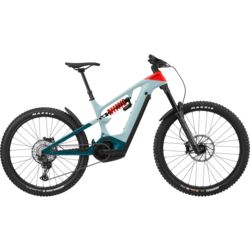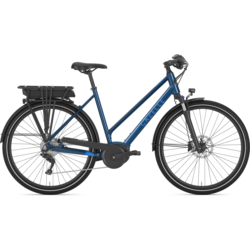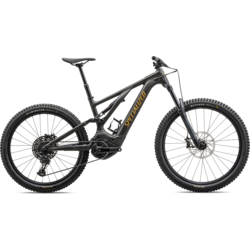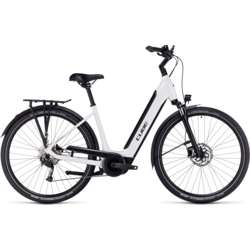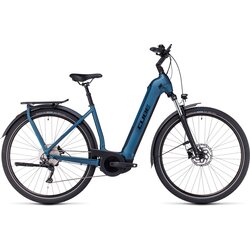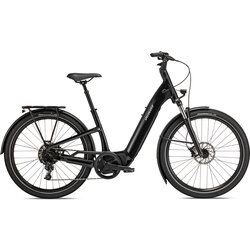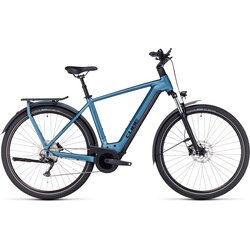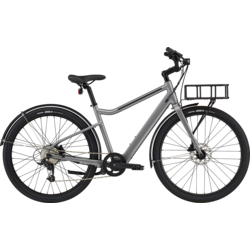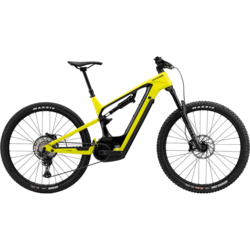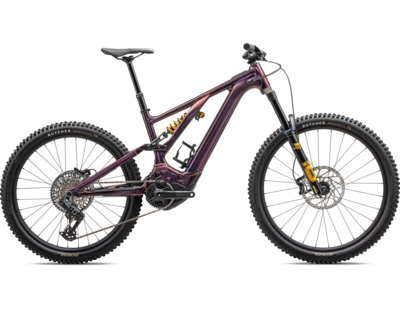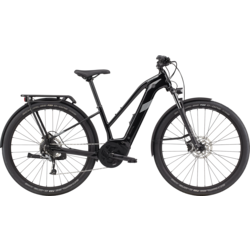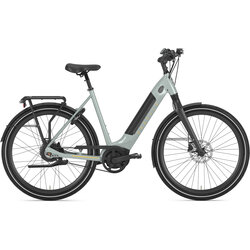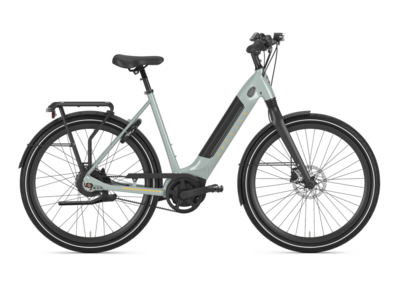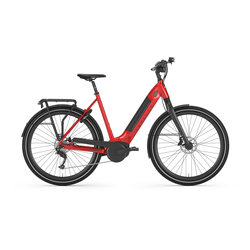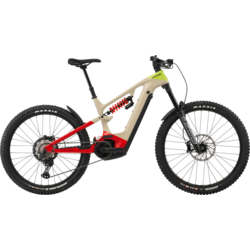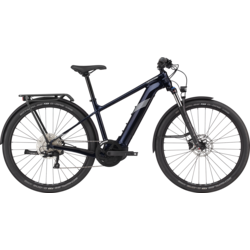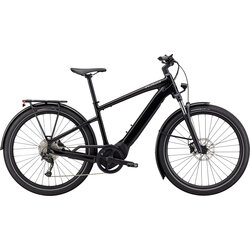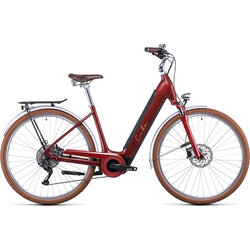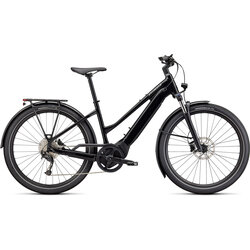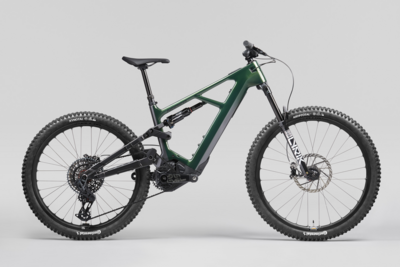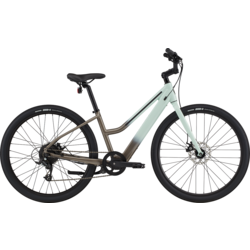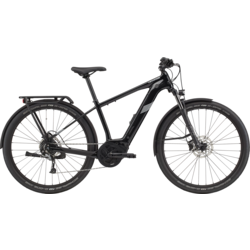Answering your questions on eBikes
THE BOTTOM LINE!
By Dave (Speedy) Porteous
E-bike systems are comprised of 3 different components: battery, motor, and interface (display).
The battery is your gas tank. Lithium battery systems are the preferred choice as they provide the maximum energy density packed into the smallest size and lowest weight to power the motor system. Battery capacity impacts how long the motor can provide you with power. The more Watt hours the battery, typically, the more km’s you can ride. Typical Wh for batteries range from 400 Wh to 750 Wh. Some battery systems allow for a “piggy-back” battery (Specialized Creo, Norco Range VLT), while other bikes intended for touring will allow for 2 batteries (500 Wh + 500 Wh = loads of km’s). Keep this in mind when thinking about how you will use your e-bike. Things like hilly terrain, temperature, and level of support can use battery power quickly.
Typical motor systems put out 250 Watts of nominal power. The motor provides the torque and acceleration. Motor systems for mountain bikes typically have higher torque specifications to suit the style of riding, while urban e-assist systems have lower torque specifications to provide the rider smooth and confident inspiring acceleration. The maintenance-free motors have an electronic control unit with an ultra-modern 32-bit processor and sensors for power, pedal rate and speed. Sensors measure, over 1000 times per second, pedaling force, cadence and speed. This facilitates an organic interaction between rider and eBike. The higher the power, the higher the torque and therefore the faster the acceleration. Thanks to 1,000 sensor measurements per second, its coordination is superb. The harder you push on the pedals, the more the electric drive supports you. When you stop pedaling, the motor stops, and you continue to roll – just like on any normal bike. In other words, dynamic pedaling support provides more power during start-up, aiding powerful riding in any situation. The drive unit provides strong support at low cadences, for example for more power on hill starts. The type of motor, battery and their position on the bike affects the weight distribution and riding experience. It’s best to test ride, feel the difference and determine which you prefer.
The interface connects the rider to the e-assist system. The interface allows the rider to increase or decrease the level of support. Some interface systems connect to smart phone app’s where the rider can tune the torque settings for each level of assist (Specialized Mission Control, Shimano E-Tube, Bosch).
E-bikes still have gears! Use them! Use your gearing to optimize the range you can ride. More gears means more range. Derailleur gearing systems tend to provide a wider range and internal hub systems tend to be lower maintenance.
DO NOT CHANGE RING SIZE! Motors are designed and programmed to perform in various riding environments. You can run the risk of voiding the warranty of the motor. Motors will generally come up with “error messages” and will require a trip to the shop.
With the help of so-called "tuning dongles", as well as through chip tuning, it's possible to increase an eBike's maximum speed using the support provided by the motor. Legally speaking, whoever manipulates a pedelec and exceeds the actual 32 km/h support limit is no longer operating an electric bicycle with equivalent status to a non-motorized bicycle, but rather is riding a moped and must comply with the corresponding requirements when travelling on public roads!
The risk: The risk is posed by the fact that tuning kits and other types of manipulation can damage the drive system as well as the bike itself. If an accident is caused by tuning, it may result in high liability costs as well as criminal prosecution. You risk losing your guarantee and invalidating your warranty claims.
No memory effect
Batteries with lithium-ion cells can be charged quickly irrespective of your charge level at any time. Interruptions of the charging process do not harm the battery. Complete discharge is not required.
Extremely low self-discharge
Even after long periods of storage, e.g. over winter, the battery can be used without recharging. This means lithium-ion rechargeable batteries do not need to be recharged after a long break in use. For longer storage, a charge status of approx. 30 to 60% is recommended.
1. What is special about lithium-ion batteries?
Lithium-ion batteries are among the most up-to-date and common eBike batteries around. Thanks to their high energy density they can store more energy and are relatively light in weight. Lithium ion batteries, on average, weigh about 5.5 lbs (2.5 kg)
2. How long does a battery last?
Lithium-ion batteries are not only light; they also have a long service life. A precise life span is impossible to forecast, however. The battery’s service life will depend mainly on the nature and duration of the stress to which it is subjected.
3. How can you influence the service life?
To get the longest service life out of a battery eBikers need only to follow a few simple rules in respect of protection, transport and storage. They include storing the battery in a dry environment and protecting it from direct sunlight at a room temperature of around 15°C to 68°F 20°C. The ideal charging level for a battery is between 30% and 60%. Ideally, the battery should be recharged at room temperature. When transporting an eBike it is important to remove the battery from the bike and store it safely in the car.
4. How long does it take to charge a battery?
The charging time depends on the battery’s capacity. For example, using the standard charger (for a half charge) a Bosch PowerPack 400 takes about 1.5 hours and the PowerPack 500 roughly 2 hours. A totally depleted PowerPack 400 takes 3.5 and a PowerPack 500 roughly 4.5 hours.
5. How far can you travel on one battery? And which factors affect the battery’s range?
These are crucial questions to which there are, however, no generally valid answers. The answer can differ enormously – from less than 12 miles (20 km) to well over 62 miles (100 km) on a full battery charge. Many different factors affect the range. They include the assistance level, cycling behavior, air resistance, the cyclist’s weight, tire pressure and, of course, the terrain.
To fully understand the variables the rider must ask:
- What are the environmental conditions? (temperature, wind)
- Am I cycling on a paved road, a packed gravel road, or an off road trail?
- Does my route include ascents or consist solely of flat and open roads and trails?
All of these factors influence the battery range. Most e-bike systems and manufacturers have a range assistant on their website that takes the different factors into account and gives you an idea of how far you can expect to travel in the conditions that you specify.
6. What precautions should be taken in winter?
A general rule is that cold weather reduces battery performance. That is why, in winter at below-zero temperatures, it is advisable to wait until just before you set out before attaching to your eBike a battery that has been charged and stored at room temperature. If you have not used the eBike for quite a while – in winter, for example – the battery should be stored in an environment that is dry and cool at about 30% to 60% of its charge capacity.
Typical warranty for lithium-ion batteries: 2 years or 500 full cycles. And will hold between 60-70% of full charge.
7. What must be kept in mind when cleaning the battery?
A pressure washer is unsuitable for cleaning an eBike, especially its electronic components. We recommend wiping the battery with a damp cloth. Do not use strong detergents that might affect the surface and always remove the battery before cleaning the eBike. Its plug connectors should also be cleaned and lightly greased from time to time.
8. How are batteries best charged?
Lithium-ion cells can be charged for as short a period as you like irrespective of their charge status. An important point to bear in mind is that eBike batteries should only be charged with the right charger because irreparable damage might otherwise result and warranty or guarantee claims might become invalid.
For example; the Bosch PowerPack’s integrated battery management system, combined with a Bosch charger, protects the battery from overload when charging. Interrupting the charging process does the battery no harm.
9. How often can a battery be recharged?
Even after 500 full charges the battery will still retain a high capacity—60 to 70% of the original capacity will then still be available. In an ADAC test carried out in autumn 2015 a Bosch eBike battery was fully discharged and recharged 1,515 times before it retained only 30% of its original capacity and was no longer of any real use. This means that the battery would have been sufficient for up to 57,000 km (35,400 miles) – or one-and-a-half times around the globe.
10. Where can batteries be repaired?
High-quality lithium-ion batteries are complex, finely-tuned systems the repair of which requires special expertise and elaborate production facilities. That is why a defective battery must in nearly all cases be replaced. We recommend the following procedure. First, let the dealer check whether the battery really is defective and has, for instance, a fault in its electronics. That is something the dealer can check using the battery management system and the diagnostic tool. If the battery is defective, the dealer will dispose of it with due regard for the safety regulations.





